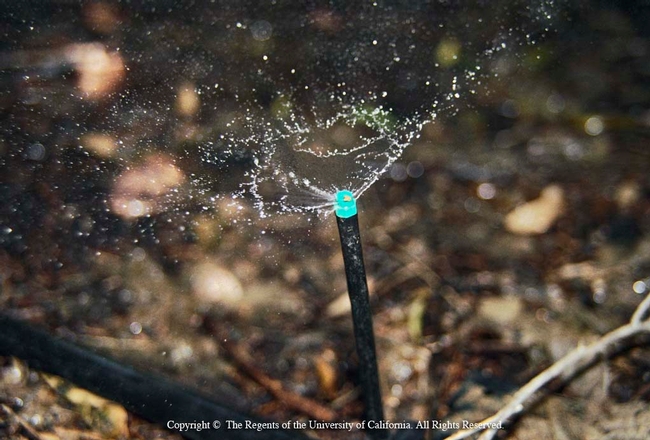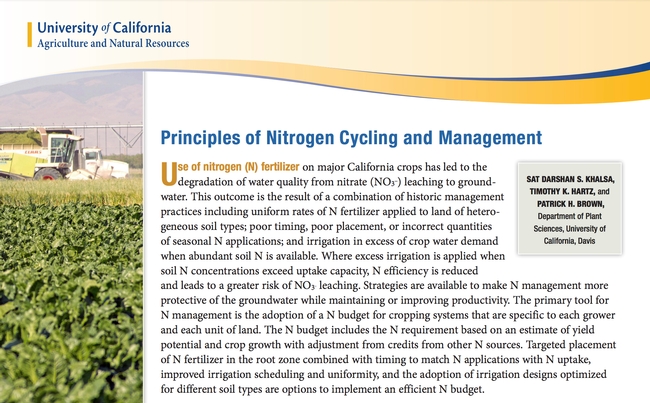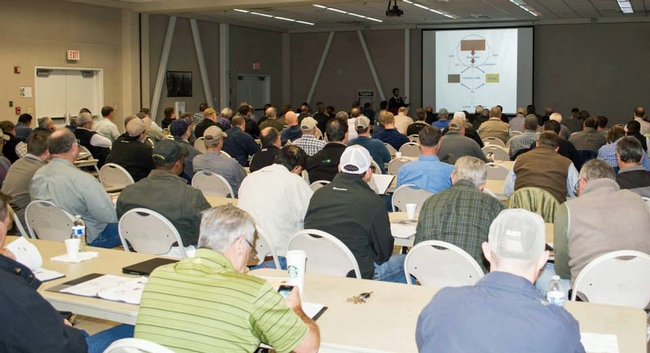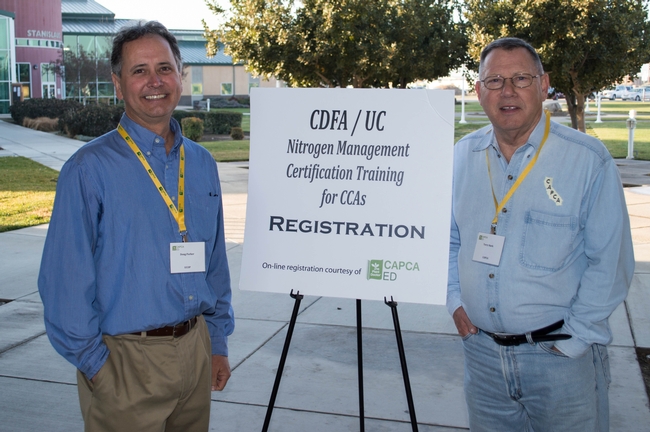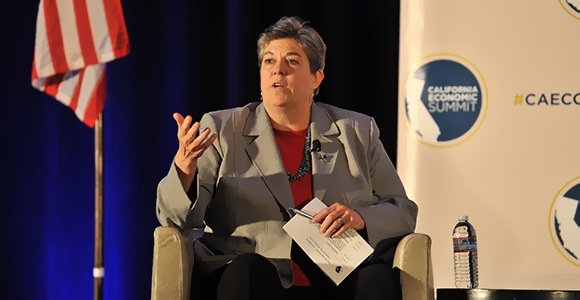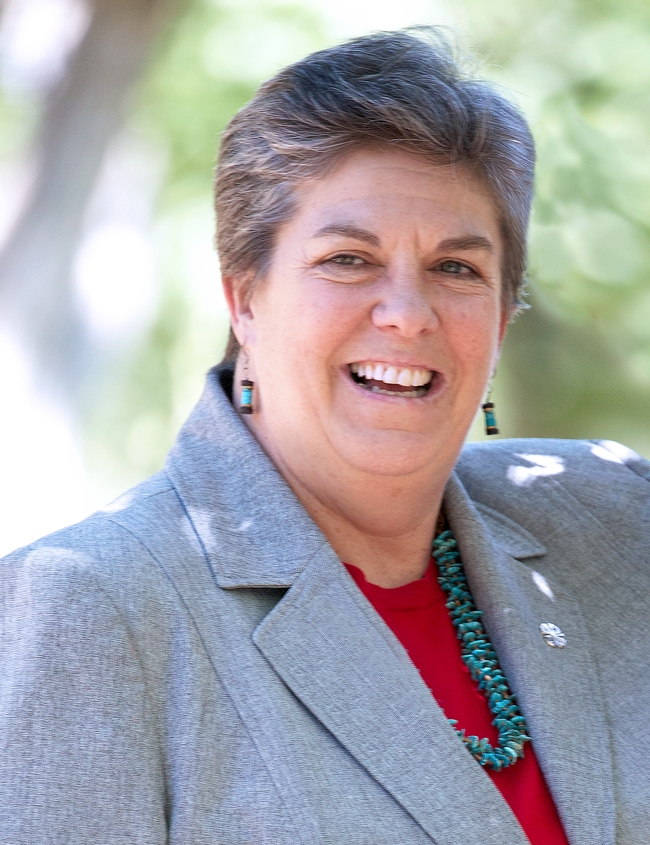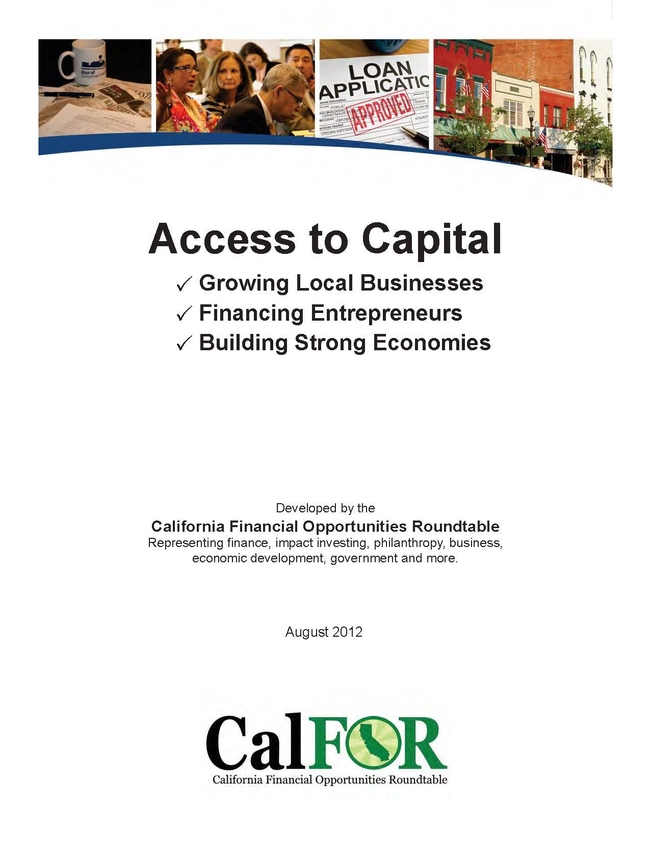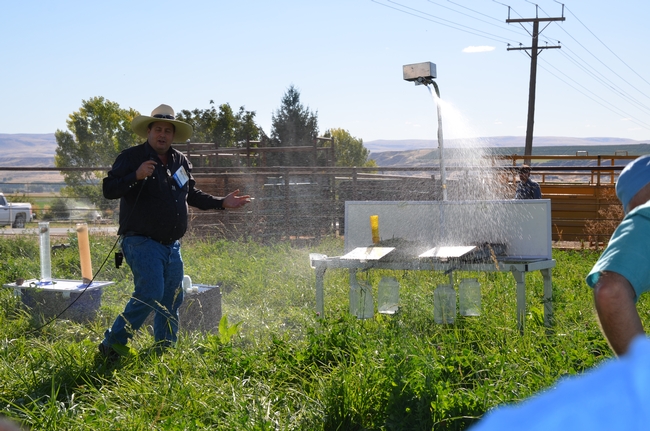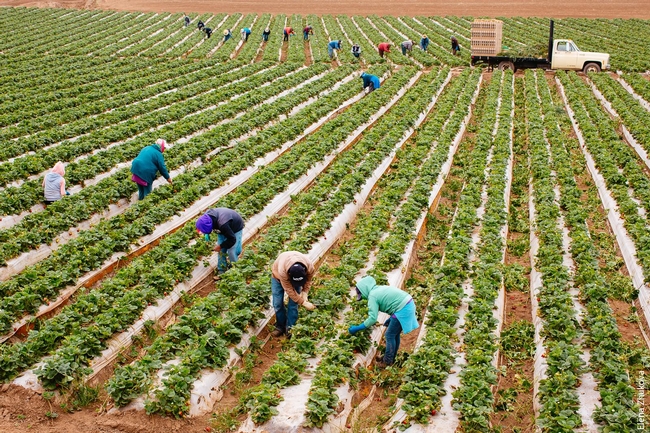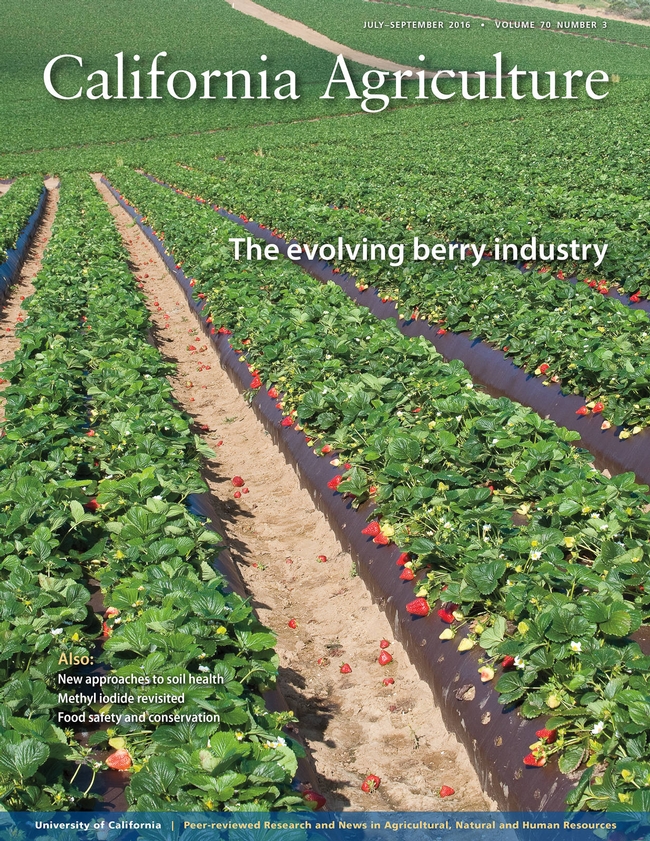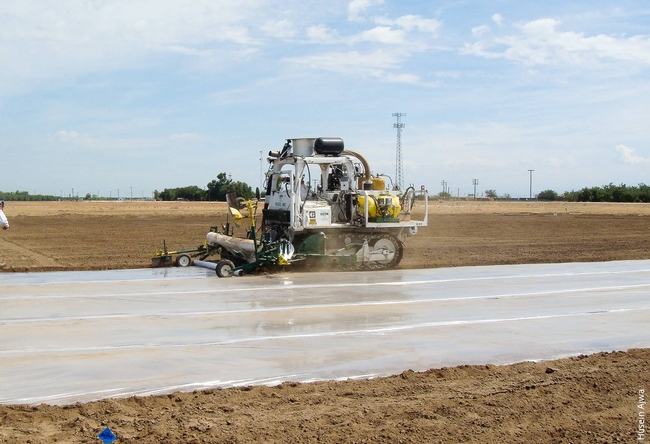Posts Tagged: California
Porse named director of California Institute for Water Resources
Erik Porse joined the University of California Agriculture and Natural Resources on Jan. 11 as director of the California Institute for Water Resources.
Porse has built an outstanding career in water as a research engineer with the Office of Water Programs at California State University, Sacramento and an assistant adjunct professor with UCLA's Institute of the Environment and Sustainability. His research focuses on urban and water resources management. He specializes in bringing together interdisciplinary teams to investigate complex environmental management questions.
Porse earned a Ph.D. in civil and environmental engineering (water resources) from UC Davis and a master's degree in public policy (science and technology) from George Mason University. His professional experience includes international work and teaching in Mexico, Europe, Japan and East Africa. He has authored over 50 reports and peer-reviewed articles.
“UC ANR is fortunate to have a director with broad professional experience in science and policy at the United Nations, the U.S. government, private sector firms and research laboratories,” said Deanne Meyer, UC ANR interim associate vice president for programs and strategic initiatives. “Erik's recent research has collaborated with scientists and projects addressing priority areas in the California Water Resilience Portfolio, including safe drinking water, efficient urban water use, sustainable groundwater management, water reuse, beneficial uses of stormwater, and environmental finance.”
The CIWR is the California hub of the national network of water research institutes supported by the federal Water Resources Research Act of 1964 and provides and communicates solutions to complex water issues and will serve a critical role to support applied water research that tackles large problems with systems approaches, including groundwater recharge, water rights, irrigation management, water finance, and drinking water access. The CIWR works with scientists throughout California as well as through the national network to bring defensible solutions and alternatives to California's water management community.
“Water is a necessity for life and management of water is essential for California's economy and prosperity,” Meyer said. “Porse's leadership with multidisciplinary research teams, water policy research, and integrated systems modeling will serve the CIWR and ANR for years to come.”
Porse succeeds Doug Parker, who retired in 2022 after 11 years as CIWR director.
UC ANR publishes nitrogen management advice for fruit, nuts and other crops
California growers can download a new series of publications summarizing efficient nitrogen management practices from UC Agriculture and Natural Resources. The publications are designed to assist growers in complying with state regulations for tracking and reporting nitrogen fertilizer applied to crops, in an effort to prevent nitrogen from leaching into groundwater.
The science-based publications are associated with a series of trainings for growers and Certified Crop Advisers to develop efficient nitrogen management practices, an effort coordinated by UC ANR's California Institute for Water Resources.
“Our role is to provide farmers, agricultural consultants and policymakers the best science possible for making decisions on managing and protecting California groundwater,” said Doug Parker, director of the water institute.
The free publications, created from training materials, lessons learned from the training sessions and from additional UC research, can be downloaded at http://ucanr.edu/nmgmtpublications.
The following publications are now available for download:
· Principles of Nitrogen Cycling and Management
· Irrigation and Nitrogen Management
· Nitrogen Management for Nut Crops
· Nitrogen Management for Deciduous Fruit and Grapes
· Nitrogen Management for Citrus and Avocado
· Nitrogen Management for Cool-Season Vegetables
· Nitrogen Management for Strawberry Production
· Nitrogen Management for Processing Tomato
· Nitrogen Management for Corn on California Dairies
The publications were authored by Parker of California Institute for Water Resources; Patrick Brown, professor in the UC Davis Department of Plant Sciences; Allan Fulton, UC Cooperative Extension advisor, Tehama County; Tim Hartz, UC Cooperative Extension specialist emeritus, UC Davis Department of Plant Sciences; Dan Munk, UC Cooperative Extension advisor, Fresno County; Daniel Geisseler, UC Cooperative Extension specialist, UC Davis Department of Land, Air & Water Resources; Michael Cahn, UC Cooperative Extension advisor, Monterey, Santa Cruz and San Benito counties; Richard Smith, UC Cooperative Extension advisor, Monterey, Santa Cruz and San Benito counties; Marsha Campbell, UC Cooperative Extension advisor emeritus, Stanislaus County; Sat Darshan Khalsa, UC Davis project scientist; and Saiful Muhammad, UC Davis graduate student.
Developed in 2014, the training program has been offered at 11 different locations around the state, most recently in Fresno. More than 1,000 Certified Crop Advisers have taken the training.
The nitrogen management training curriculum was developed by a group of UC ANR faculty, specialists and advisors. The first day focuses on the nitrogen cycle in crop production systems, nitrogen sources, irrigation and nitrogen management, and nitrogen budgeting. The second morning covers annual and permanent crops and nitrogen planning practices.
For more information on the nitrogen management training materials, visit http://ciwr.ucanr.edu/NitrogenManagement.
The Nitrogen Management Training and Certification Program is a joint effort between the California Department of Food and Agriculture, UC Agriculture and Natural Resources, California Association of Pest Control Advisers' Certified Crop Adviser Program and the Regional Water Boards.
Humiston to be honored as 2018 California Steward Leader at California Economic Summit
Glenda Humiston has always been involved in rural issues from her days growing up on a cattle ranch to her current efforts to connect rural communities to more resources as University of California vice president for agriculture and natural resources.
In recognition of her contributions to sustain California as a place to create and thrive and to bestow to future generations, Humiston will be presented the 2018 California Steward Leader Award by California Forward and the California Stewardship Network at the California Economic Summit in Santa Rosa on Nov. 16. She currently serves on the 2018 Economic Summit Steering Committee and is the Action Team co-lead for Working Landscapes and co-chair of Elevate Rural California.
She has been involved with the California Economic Summit from the beginning, chairing the Access to Capital Action Team at the first Summit in 2012. To raise awareness of innovative options for financing projects, she founded and chaired the California Financial Opportunities Roundtable and was instrumental in producing the Access to Capital Guidebook, a widely used resource for small business owners, policymakers and financial institutions.
Humiston served as deputy undersecretary for natural resources and environment at USDA from 1998 to 2001 under President Clinton. She then managed the Sustainable Development Institute at the 2002 World Summit for Sustainable Development in South Africa and the 2006 World Water Forum in Mexico City. In 2009, Humiston was appointed by President Obama to serve as the California State Director at the United States Department of Agriculture (USDA), Rural Development.
Working landscapes a significant sector of the economy
He added, “The fact that rural issues are on the agenda, the fact that we're talking about ecosystem services and the contributions that Working Landscapes can make in terms of meeting the Economic Summit's million-acre feet of water goal, Glenda has done a tremendous amount to make that possible.”
Sonoma County Supervisor James Gore agreed. “Glenda is a powerful and relentless advocate for triple bottom line prosperity. She has championed and delivered in every position I have seen her in. As one of the Co-chairs/Steering Committee for the Economic Summit, she has ensured that working landscapes remains a driver for rural prosperity.”
“Glenda embodies what CA Forward and the California Stewardship Network are all about: empowering regional hubs to own their own future,” added Gore, who served with Humiston at the U.S. Department of Agriculture as presidential appointees under President Obama.
Her work on rural issues continues. “Our Ecosystems Services Team has done a fantastic job in highlighting the opportunities for ecosystem services to be a powerful policy instrument as well as a compensation instrument for landowners to ensure that the many benefits from ecosystem services are available to the general public,” Humiston said. She added that recommendations from last year's Summit may be included in upcoming legislation.
Biomass, rural broadband and water infrastructure
As co-chair of Elevate Rural California, she is working on three main areas: biomass, rural broadband and water infrastructure. “We identified those issues at last year's Summit and worked this year to identify where the opportunities were as well as options to pursue. We're bringing that information to the Summit this year to get people to really rally around those three issues and move forward working on implementation.”
To support these initiatives, Humiston is working to enhance economic development efforts throughout the state by ensuring that the research and resources of the University of California are delivered to every single community in the state. UC Cooperative Extension is in 70 communities and serves all 58 counties; its mission is to conduct research and extend knowledge that supports food security, healthy environments, science literacy, youth development and economic success in a global economy.
Humiston, who joined the university in 2015 and clearly loves her work, said, “I love the mission of the programs I oversee for the University of California. This work is critical as we seek solutions to the challenges we all face: climate change, invasive species, changing workforce demands, water management and more.”
Vision based on partnerships
Her vision is really based on partnerships. “I also see great opportunity for increased collaboration between UC, CSU and the Community Colleges," she said. "Working together we can offer more robust support for innovation, regional industry clusters, new business opportunities and other aspects of local economic development; we can bring a lot of resources to the table. Working with the California Economic Summit allows us to leverage the resources of various regional initiatives as well as other sectors; this helps all the Summit's efforts to be more successful.”
As for the award, Humiston is humbled. “It's quite heart-warming to be selected by people I respect for something like that and certainly to be in the company of people who have won it in past years,” she said.
Previous recipients of the California Steward Leader Award include former California State Senator Becky Morgan, California Emerging Technology Fund's Sunne McPeak and Van Ton-Quinlivan, vice chancellor of the California Community Colleges.
Humiston will receive the award on Friday, Nov. 16, at the annual gathering of the California Economic Summit in Santa Rosa.
California Farm Demonstration Network forms to foster farmers’ innovation
Innovation is key to keeping California farmers globally competitive. On Friday, May 5, the California Department of Food and Agriculture, California Farm Bureau Federation, California Association of Resource Conservation Districts, USDA Natural Resources Conservation Service, UC Davis and UC Agriculture and Natural Resources will forge a formal agreement to better connect the state's farmers with each other and with science-based information sources to assure the sustainability of the state's agricultural systems. Representatives of the six organizations will sign a memorandum of understanding (MOU) to form the California Farm Demonstration Network.
The scarcity of water, fossil fuel use, carbon emissions, groundwater quality, labor cost and availability, air quality and loss of soil fertility are some of the challenges to the long-term viability of farming in California. Soils and their sustained health play a major role in keeping California's agriculture viable for future generations.
“What we are striving to accomplish with the California Farm Demonstration Network is to create a means for farmers to learn, to discover and to innovate,” said Jeff Mitchell, UC Cooperative Extension cropping systems specialist, who is leading the effort with technical and funding assistance from MOU partners.
WHO:
- Karen Ross, secretary of the California Department of Food and Agriculture
- Paul Wenger, president of the California Farm Bureau Federation
- Ron Tjeerdema, associate dean of UC Davis College of Agricultural and Environmental Sciences
- Glenda Humiston, University of California vice president for Agriculture and Natural Resources
- Karen Buhr, executive director of California Association of Resource Conservation Districts
- Carlos Suarez, state conservationist for USDA Natural Resources Conservation Service
WHEN: Friday, May 5
12:30 p.m. to 1 p.m. – Demonstration of differences in soil function resulting from management practices.
1 p.m. to 2 p.m. – Network partners describe their respective roles.
WHERE: Dixon Ridge Farms, 5430 Putah Creek Road, Winters, CA
VISUALS: A rainfall simulator will spray water over trays of different soils to show how on-farm management practices help the soil hold together.
Network partners will sign the memorandum of understanding.
BACKGROUND:
The statewide farm demonstration network builds upon and connects efforts across California including one created in Glenn County last year.
In Glenn County, the farmer-driven effort has provided the opportunity for local farmers to share innovative practices and hold honest discussions about opportunities and challenges related to these systems.
“The collaborative effort of the partners presents the opportunity to leverage resources based on local needs and increases the likelihood that innovative agricultural practices will be adopted sooner than they might have been without the networking opportunity,” said Betsy Karle, UC Cooperative Extension director in Glenn County.
With the California Farm Demonstration Network, the organizers hope to create more opportunities to connect local people, showcase existing farmer innovation, engage in new local demonstration evaluations of improved performance practices and systems, evaluate the demonstration practices, and share information with partners. They also hope to expand and connect other local farm-demonstration hubs throughout the state via educational events, video narratives and a web-based information portal.
What will California's strawberry industry do without methyl bromide?
2016 is the final year for the soil fumigant to be used in California crop fields.
For many years, California growers relied on methyl bromide to kill a wide range of soil-borne pests, from fungi to insects to weeds, before planting crops. 2016 marks the last year in which the highly effective soil fumigant will be available.
The University of California's peer-reviewed journal California Agriculture examines the impact of the methyl bromide phaseout on strawberries, California's third most valuable crop, behind only almonds and grapes, with annual farmgate sales of $2.5 billion.
First identified as an ozone-depleting compound in 1991, methyl bromide was scheduled for phaseout in the United States by 2005 under the Montreal Protocol, an international agreement to protect the stratospheric ozone layer.
While methyl bromide was used for many crops, California strawberry growers found it irreplaceable, which helped the industry win exemptions that have allowed a significant, though declining, quantity of the chemical to be used through 2016. Despite years of research into alternatives, no equally effective replacement has emerged.
Seven articles in the July-September issue of California Agriculture discuss methyl bromide alternatives and economic and production effects on the California strawberry industry.
Berry industry grows dramatically
In the first research article, UC Cooperative Extension advisors Laura Tourte and Mark Bolda and Karen Klonsky, emeritus UC Cooperative Extension economics specialist, review economic data on the berry sector — blackberries and raspberries as well as strawberries — in Santa Cruz and Monterey counties. They look ahead to factors, including water, consumer demands, labor, invasive pests, and the full phaseout of methyl bromide, that are likely to shape future growth.
Methyl iodide controversy
In a paper chronicling events leading up to the 2012 withdrawal of methyl iodide, once promoted as a viable methyl bromide substitute, Julie Guthman, UC Santa Cruz professor in the Department of Social Sciences, reports survey findings that point to a variety of reasons why strawberry growers did not move quickly to adopt the chemical after it was approved by state regulators. Concerns about public opposition topped the list, followed by a variety of other factors, including concern about methyl iodide's toxicity, and a lack of strong incentive to switch to the new chemical because of the availability of other fumigants, including methyl bromide.
Managing soilborne pests
Three articles look at new approaches to managing soilborne pests without methyl bromide.
“It now seems likely that no single measure will suffice to meet the challenge of soilborne pathogens,” write Margaret Lloyd, UC Cooperative Extension advisor, and Tom Gordon, UC Davis professor in the Department of Plant Pathology, in this issue's Outlook. “Rather, a multi-faceted approach will be required, one that integrates advances in disease resistance through breeding with closer attention to the factors that influence the survival, activity and spread of pathogen populations in soil.” They make the case for using a suite of strategies to manage soilborne pathogens — including collective action among growers to help limit the spread of pathogens between fields.
A news item on research at the UC ANR Hansen Agricultural Research and Extension Center covers ongoing research on anaerobic soil disinfestation, a chemical-free technique that is being used in a growing number of commercial fields. Project scientist Amanda Hodson and UC Davis professor Edwin Lewis, both in the Department of Entomology and Nematology, review a variety of approaches to managing for soil health — in strawberries and other crops — as a pest suppression strategy.
Other soil fumigants
Fumigants other than methyl bromide, such as chloropicrin, remain widely used in California strawberry production. Rachael Goodhue, UC Davis professor in the Department of Agricultural and Resource Economics at UC Davis, examines how increasingly stringent buffer zone requirements for chloropicrin application have an uneven impact on growers, depending on their proximity to developed land. In another article, a group of UC Cooperative Extension and U.S. Department of Agriculture scientists report on the effectiveness of several fumigants at dosages lower than the maximum label rate.
Food safety and nutrient management on the farm
The issue also includes two research papers focused on general production practices for crops. One report discusses on-farm food safety practices based on a survey of produce growers. The researchers found that practices such as exclusion fencing and vegetation clearing, which may negatively impact wildlife, remain widespread despite a lack of clear evidence that they enhance food safety. Finally, Daniel Geisseler, UC Cooperative Extension specialist in the Department of Land, Air and Water Resources at UC Davis, and Gene Miyao, UC Cooperative Extension advisor, review the use of soil testing to guide the management of soil phosphorus and potassium in California cropping systems.
To read California Agriculture, a peer-reviewed journal of research in agricultural, human and natural resources published by UC Agriculture and Natural Resources, visit http://calag.ucanr.edu. For a free subscription, sign up on the website or write to calag@ucanr.edu.
View this story in Spanish:
¿Qué hará la industria de la fresa sin el bromuro de metilo? http://ucanr.edu/sites/Spanish/noticias/?uid=6887&ds=199. Video on UCANR Spanish YouTube: California Agriculture: el bromuro de metilo en cultivos de fresa https://www.youtube.com/watch?v=5D4FwLqjaLk.


